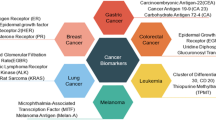Abstract
Background
Epilepsy, a central neurological disorder, has a complex genetic architecture. There is some evidence suggesting that genetic factors play a role in both the occurrence of epilepsy and its treatment. However, the genetic determinants of epilepsy are largely unknown. This study aimed to identify potential therapeutic targets for epilepsy.
Methods
Differentially expressed genes (DEGs) were extracted from the expression profiles of GSE44031 and GSE1834. Gene co-expression analysis was used to confirm the regulatory relationship between newly discovered epilepsy candidate genes and known epilepsy genes. Expression quantitative trait loci analysis was conducted to determine if epilepsy risk single-nucleotide polymorphisms regulate DEGs’ expression in human brain tissue. Finally, protein–protein interaction analysis and drug–gene interaction analysis were performed to assess the role of DEGs in epilepsy treatment.
Results
The study found that the protein tyrosine phosphatase receptor-type O gene (PTPRO) and the growth arrest and DNA damage inducible alpha gene (GADD45A) were significantly upregulated in epileptic rats compared to controls in both datasets. Gene co-expression analysis revealed that PTPRO was co-expressed with RBP4, NDN, PAK3, FOXG1, IDS, and IDS, and GADD45A was co-expressed with LRRK2 in human brain tissue. Expression quantitative trait loci analysis suggested that epilepsy risk single-nucleotide polymorphisms could be responsible for the altered PTPRO and GADD45A expression in human brain tissue. Moreover, the protein encoded by GADD45A had a direct interaction with approved antiepileptic drug targets, and GADD45A interacts with genistein and cisplatin.
Conclusions
The results of this study highlight PTPRO and GADD45A as potential genes for the diagnosis and treatment of epilepsy.
Similar content being viewed by others
Background
Epilepsy, a central neurological disorder characterized by recurrent, spontaneous seizures, affects over 68 million people globally [1]. The primary causes of epilepsy are abnormal discharges in the hippocampus or cerebral cortex [2, 3]. While approximately 70% of seizures can be effectively managed with approved antiepileptic drugs [4], the remaining 30% are resistant to pharmacotherapy, resulting in significant psychological and physical burdens for patients [5].
The genetic determinants of epilepsy are largely unknown. There is evidence suggesting that genetic factors contribute to both generalized and focal epilepsies [6]. Mutations in certain genes have been associated with epilepsy [6, 7], but the role of common polymorphisms in epilepsy is still unclear [8, 9]. Several recent studies have identified new epilepsy loci [10,11,12,13,http://bioinformatics.psb.ugent.be/webtools/Venn/).
Gene co-expression analysis
Gene co-expression analysis is a method used to discover the regulatory relationships between genes and subsequently identify potential disease candidate genes. Given that gene expression is tissue-specific, we investigated the co-expression relationships between DEGs and known epilepsy genes in human brain tissues. The gene co-expression database for brain tissue serves as an effective tool for analyzing the co-expression relationships of genes associated with brain diseases [24].
eQTL analysis
To determine the impact of epilepsy risk single-nucleotide polymorphisms (SNPs) on the expression of DEGs in human brain tissue, we performed eQTL analysis. This analysis was conducted using BRAINEAC (http://www.Braineac.org/) [25], a tool designed to investigate the association between SNPs and the expression of their target genes in human brain tissue.
Evaluation of DEGs in epilepsy treatment
To identify new antiepileptic drug targets and facilitate the translation of these findings into clinical therapy, we first identified approved antiepileptic drug therapeutic targets using DrugBank5.0 and the Therapeutic Target Database 2020 [26, 27]. We then conducted PPI analysis to explore the relationship between newly discovered epilepsy-related genes and approved antiepileptic drug target genes. This PPI analysis was performed using the STRING database (https://string-db.org/cgi/input.pl) [28], and a PPI network was constructed using Cytoscape software [29]. The findings from the PPI analysis were further validated by a drug–gene interaction analysis using the Drug–Gene Interaction Database [30].
Result
Analysis of DEGs in epilepsy rat models and controls
Based on the selection criteria for DEGs outlined in the “Methods” section, 91 DEGs were selected from the GSE44031 dataset (see Additional file 1: Table S1), and 425 DEGs were selected from the GSE1834 dataset (see Additional file 2: Table S2). As depicted in Fig. 1, five genes overlapped between the two datasets (see Additional file 3: Table S3). Specifically, among these five DEGs, the expression regulation of one gene was inconsistent across the two datasets, leading to its removal. The expression of the remaining four genes was upregulated in both datasets (Fig. 2), with two of them (GFAP and S100A4) previously reported to be associated with epilepsy [Full size image
Gene co-expression analysis
As genetic research advances, an increasing number of epilepsy-related genes have been identified [33]. In this study, we utilized these reported epilepsy-related genes along with the newly discovered genes for gene co-expression analysis. The analysis revealed that PTPRO was co-expressed with RBP4, NDN, PAK3, FOXG1, and IDS in human brain tissue. Similarly, GADD45A was found to be co-expressed with LRRK2 in human brain tissue (Fig. 3).
eQTL analysis
In this study, we focused on SNPs that have been previously reported to be associated with epilepsy for eQTL analysis. Specifically, we explored whether the SNPs rs4794333, rs68082256, rs11943905, rs12185644, rs6432877, rs2212656, rs1402398, rs11890028, rs887696, rs1044352, rs13200150, and rs4671319, which have been associated with epilepsy in a multicenter study [16], regulate the expression levels of the newly discovered genes in human brain tissue. Interestingly, our findings suggest that these SNPs do indeed regulate the expression levels of PTPRO and GADD45A in human brain tissue (Table 1).
Evaluation of PTPRO and GADD45A in epilepsy treatment
To explore the potential role of PTPRO and GADD45A in epilepsy treatment, we first conducted an interaction analysis between the proteins encoded by PTPRO and GADD45A and the targets of approved antiepileptic drugs (Table 2). We found that the protein encoded by GADD45A had direct interactions with the targets of approved antiepileptic drugs, including PPARA and PPARG (Fig. 4). Further drug–gene interaction analysis revealed that GADD45A interacts with genistein and cisplatin.







